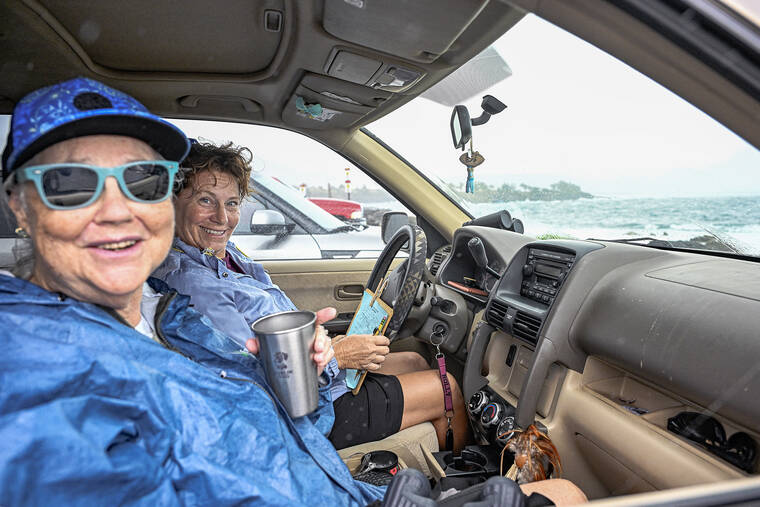AHUKINI LANDING — During the final Sanctuary Ocean Count for 2024 held on Saturday, a grand total of 855 whales were seen from the shorelines of Kaua‘i, O‘ahu, Moloka‘i, Hawai‘i Island, Lana‘i and Maui.
“On Kaua‘i, the total number of whales observed during the day’s count was 74,” said Ocean Count Coordinator Cindy Among-Serrao. “On O‘ahu, the total was 282, on Moloka‘i, the total was 28, and Hawai‘i island reported 84. The total number for the Great Whale Count on Maui was 367, and on Lana‘i, the count was 20 for a grand total of 855 throughout the state.”
Among-Serrao said this number may represent duplicate sightings of the same whale by different observers, or at different time periods, or different locations throughout the day that started at 8 a.m. and ended at noon.
“This is the sixth year that both counts — the Sanctuary Ocean Count and The Great Whale Count by the Pacific Whale Foundation — are coordinated on the same days, ensuring the data from all the main Hawaiian islands are collected simultaneously,” Among-Serrao said.
Data collection was performed by 424 volunteers during the Sanctuary Ocean Count and the Great Whale Count.
“Volunteers collected data from 46 sites across all the main Hawaiian Islands,” Among-Serrao said. “A total of 143 whales were observed during the 8:30 to 8:45 a.m. time period, the most of any time period throughout the day’s count. On the islands of Kaua‘i, O‘ahu, Moloka‘i and Hawai‘i, Ocean Count volunteers collected data from 34 sites with a total of 76 whales being observed during the 8:30 to 8:45 a.m. time period.”
Across the main Hawaiian Islands, weather conditions varied island by island with mostly sunny or cloudy conditions.
“Several sites did experience rain, small to medium swells, and windy conditions, which were not ideal of observing kohola,” Among-Serrao said. “A few sites on Kaua‘i had to cancel or end the count early due to poor visibility and weather conditions.”
Jean Souza, the Hawaiian Islands Humpback Whale National Marine Sanctuary program specialist, said that the Ninini Point, Crater Hill and several South Shore sites closed early due to rain, wind and not being able to see whales.
“The wind and rain make it hard to see, anything,” said Colleen Ogino, the site leader at the Ahukini Landing state park. “They (the humpback whales) are out there. We just can’t see them.”
Among-Serrao said in addition to humpback whales’ surface behavior, volunteers reported a variety of other species during the count, including honu or green sea turtles, ‘ilioholoikauaua or Hawaiian monk seals, nai‘a or spinner dolphins. There were also multiple bird species, including ‘iwa or great frigatebird, moli or laysan albatross, ‘ua‘u or wedge-tailed shrearwater, manu-o-ku or white tern, ‘a or brown booby and more.
The Ocean Count that takes place three times during peak whale season on the last Saturday in January, February and March, promotes public awareness about humpback whales, Hawaiian Islands Humpback Whale National Marine Sanctuary, and shore-based whale watching opportunities.




